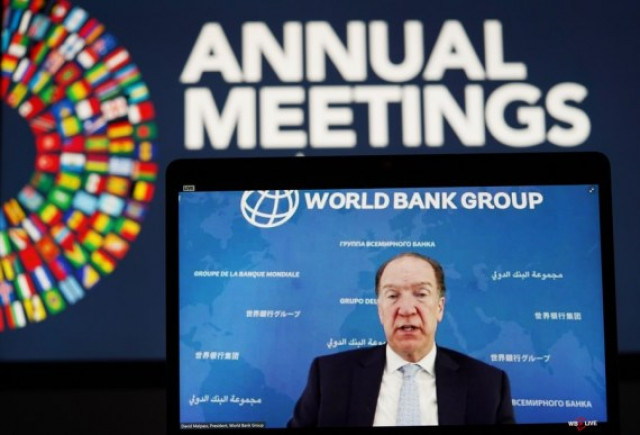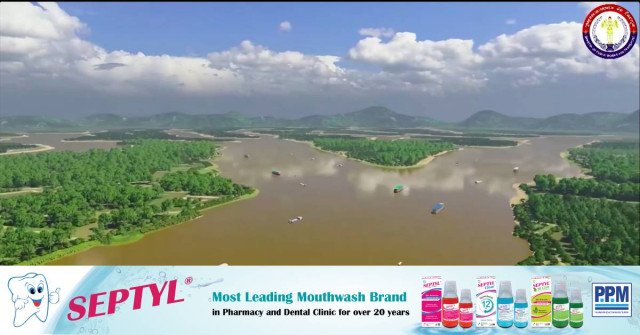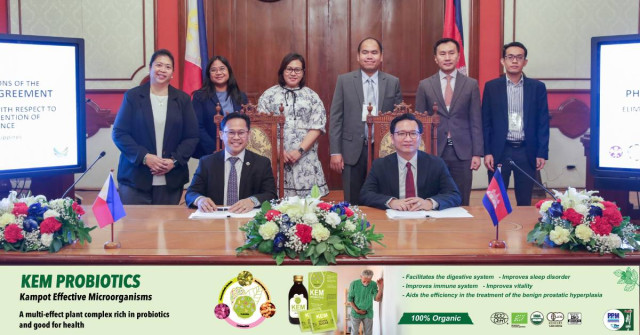Reckless Development: The Loss of Phnom Penh’s Wetlands Puts the City at Risk
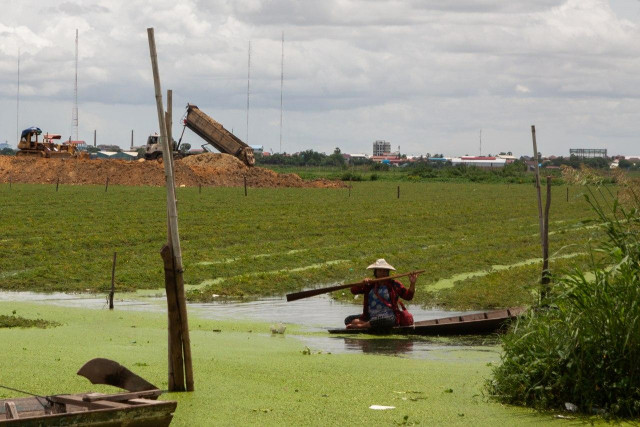
- Gerald Flynn and Phoung Vantha
- October 19, 2020 2:30 AM
In the first part of our series on the sustainability of Phnom Penh’s urbanization, we take an in-depth look at the filling-in of wetlands and lakes throughout the city and the potential flood risk this poses, as well as the services that wetlands provide.
PHNOM PENH--As of Oct. 18, at least 20 people have died throughout Cambodia and thousands more have been displaced by floods.
In Phnom Penh, despite Prime Minister Hun Sen’s assurance that the floods were not related to the government’s management of water resources, experts have long warned against filling in lakes and wetlands due to the increased risk and severity of flooding.
Back in 1935, architects Jean Desbois and Louis Chauchon were among the French based in Cambodia, which was a French protectorate at the time. Charged with beautifying Phnom Penh, Desbois and Chauchon drew up plans for Phsar Thmei—the art deco marvel known now as Central Market. In turning their architectural sketches into the landmark that it is today, the two Frenchman opted to drain the lake that occupied the market’s site, finally opening Phsar Thmei to the public in 1937.
That same year, the market fell victim to severe flooding during the annual rainy season—the lake on the land upon which Central Market was built had served as a basin for run-off water and so, with nowhere else to go, the rainwater washed its way through the market.
Flash forward some 85 years and city planners in Phnom Penh are making the same mistakes as the French. If anything, all that has changed is the pace and scale at which this is taking place in the name of economic development. By the end of 2019, investment in construction had shot up to $11 billion—a 79 percent increase— and generated an estimated 150,000 jobs, mostly focused in Phnom Penh, according to the Ministry of Land Management.
It’s understandable why Phnom Penh’s skyline has become a sea of green and blue netting as construction projects reach new heights—the 2019 census found that the Cambodian capital is now home to some 2.1 million people, with 3,136 people per square kilometer. But this demand has been met by reclaiming land and the city’s natural resources have been used to fuel the explosion of construction.
A History of Poor Planning
As long as a decade ago, this aggressive growth and use of natural assets was found to be unsustainable by the World Bank that, in 2010, wrote about the “questionable” allocation of investments and warned that the level of logging, land speculation and rise of the real estate sector posed a threat to Cambodia’s long-term development.
When the government granted a 99-year lease to the Cambodian real estate company Shukaku—headed by Cambodian People’s Party Senator Lao Meng Khin—in 2007, outrage ensued as the company began to fill in Boeung Kak, which was at the time the city’s largest lake. This was followed by forced evictions as Shukaku, backed by Chinese partner Inner Mongolia Erdos Hung Jun Investment Company, took over the lake that had been home to more than 4,000 families. Over the years, resistance to the development project snowballed, eventually contributing to the 2013 large-scale protests that engulfed Phnom Penh for months. But ultimately the lake was lost.
By December 2019, more than 60 percent of Phnom Penh’s lakes and more than 40 percent of its wetlands were gone—all filled in the name of economic progress. This, according to land and housing rights NGO Sahmakum Teang Tnaut (STT), has led to a slew of forced evictions and the social issues that arise with them but, worse still, the loss of water resources has jeopardized the environmental sustainability of the city.
“The environmental implications of these trends are not yet fully known, but predictions look dire, as flooding, environmental pollution and degradation of fishing breeding grounds is expected,” the STT’s 2019 report read.
While some may argue that environmental and social issues are just the inevitable collateral damage of pivoting from an agricultural economy to an industrialized one, experts agree that the chaotic, almost impulsive approach to urbanization in the Cambodian capital has created existential problems.
Civil Society Sounds the Alarm
A more recent report from July 2020 highlighted the serious environmental consequences of development projects taking place atop both Boeung Tompoun and the Cheung Ek wetlands. Co-authored by STT, the sustainable natural-resource use organization Equitable Cambodia, the human rights group LICADHO and the Cambodia Youth Network, the report paints a bleak picture for Phnom Penh’s future in this regard. This consortium of NGOs sought to highlight the dangers that Phnom Penh and Cambodia as a nation will face if the capital city’s water resources are converted into luxury development projects.
Headed by powerful Cambodian tycoon Ing Bun Hoaw, ING Holdings has secured permission to construct a 2,572-hectare satellite city near Hun Sen Boulevard in the south of Phnom Penh that will eat up a significant portion of the Cheung Ek wetlands, which span up to 2,500 hectares during the rainy season.
The report predicts problems beyond the environmental impact—the filling-in of Cheung Ek will incur grave financial costs, exacerbate existing social frictions and expose Phnom Penh and Ta Khmao to extreme flooding. Similarly, the wetlands function as a natural wastewater treatment facility, coping with 70 percent of the city’s wastewater—rendering it part of the city’s natural infrastructure.
“Wetlands often appear to the naked eye as just unused land,” explained Brian Eyler, program director for Southeast Asia Program at the US-funded Stimson Center. “It’s not like a farmer’s field where everyone can see the crops and the value of it, it just looks like a wetland—so most developers who are coming into this area without a knowledge of what wetlands are will get the approval needed.”
Speaking in a telephone interview, Eyler said that the value of urban wetlands is often overlooked not only in Phnom Penh, but throughout the region. The consequences of this oversight, he argued, often outweigh the short-term economic benefits of filling in wetlands.
“Developers are really throwing caution to the wind and recklessly filling in wetlands despite the best advice from conservationists and Khmer experts who understand the importance of having wetlands in and around the city,” he said, adding that Phnom Penh is especially susceptible to floods because it sits at the confluence of the Mekong, the Bassac rivers and the Tonle Sap Lake.
Flooding has been a major issue in Phnom Penh for decades, but the government has often attempted to lump blame at the feet of climate change. As recently as June 2020, Phnom Penh Governor Khoung Sreng called a press conference to warn of the new speed with which the city appears to be flooding, but stopped short of recognizing the importance of Phnom Penh’s lakes and wetlands in mitigating the flood risk.
Disaster Imminent
As Eyler noted however, flooding has actually been happening less in Cambodia as the annual rainy season has shortened on both sides—starting later and finishing earlier than previous years—which he attributes to a range of factors, including climate change and the El Niño effect. However, although the frequency of flooding has reduced, the intensity has—in line with climate change predictions—increased, placing greater strain on the city’s natural flood defenses, he said.
“If urban areas do flood, they will flood more intensely and Phnom Penh seems to be setting itself up for a major disaster in the future,” Eyler said. “I’d say there likely will be a major flood in the next few years and it will likely be devastating.
“But again this will be a result of man’s inability—or planners’ inability—to adapt to both the natural flood situation, as well as the coming intensified storms that result from climate change,” he added.
Both City Hall Spokesperson Met Measpheakdey and Phnom Penh Governor Khoung Sreng repeatedly declined to comment on the city’s flood mitigation strategies or the increased flood risks brought about by property developments encroaching on lakes and wetlands in both the north and the south of the city.
Back in July this year, it was revealed that 300 hectares of Boeung Tamok had been handed over to the Ministry of Defense for a new command center. This was the fourth time that the lake had been trimmed for urban developments this year, but it was not to be the last time. A Council of Ministers decree dated Sept. 1 shows that a further 15 hectares were to be granted to the Cambodian Human Rights Committee, the Cambodian Mine Action Authority and, perhaps fittingly, the National Committee for Disaster Management. The following month, Boeung Tamok lost a further eight hectares to the Ministry of Justice for a document storage facility.
The threat of disasters posed by developments atop Phnom Penh’s wetlands has not escaped the notice of analysts however, with Horn Chanvoitey—a junior research fellow at Cambodian think-tank Future Forum—sounding the alarm over the colossal projects happening in the southern part of the capital. “Given the loss of wetlands and low-level flood protection, the residents of Phnom Penh and Ta Khmao will be exposed to physical damage as well as losses from economic activities,” she said. “Pollutants from different surfaces contaminate water, rendering [residents] vulnerable to waterborne diseases.”
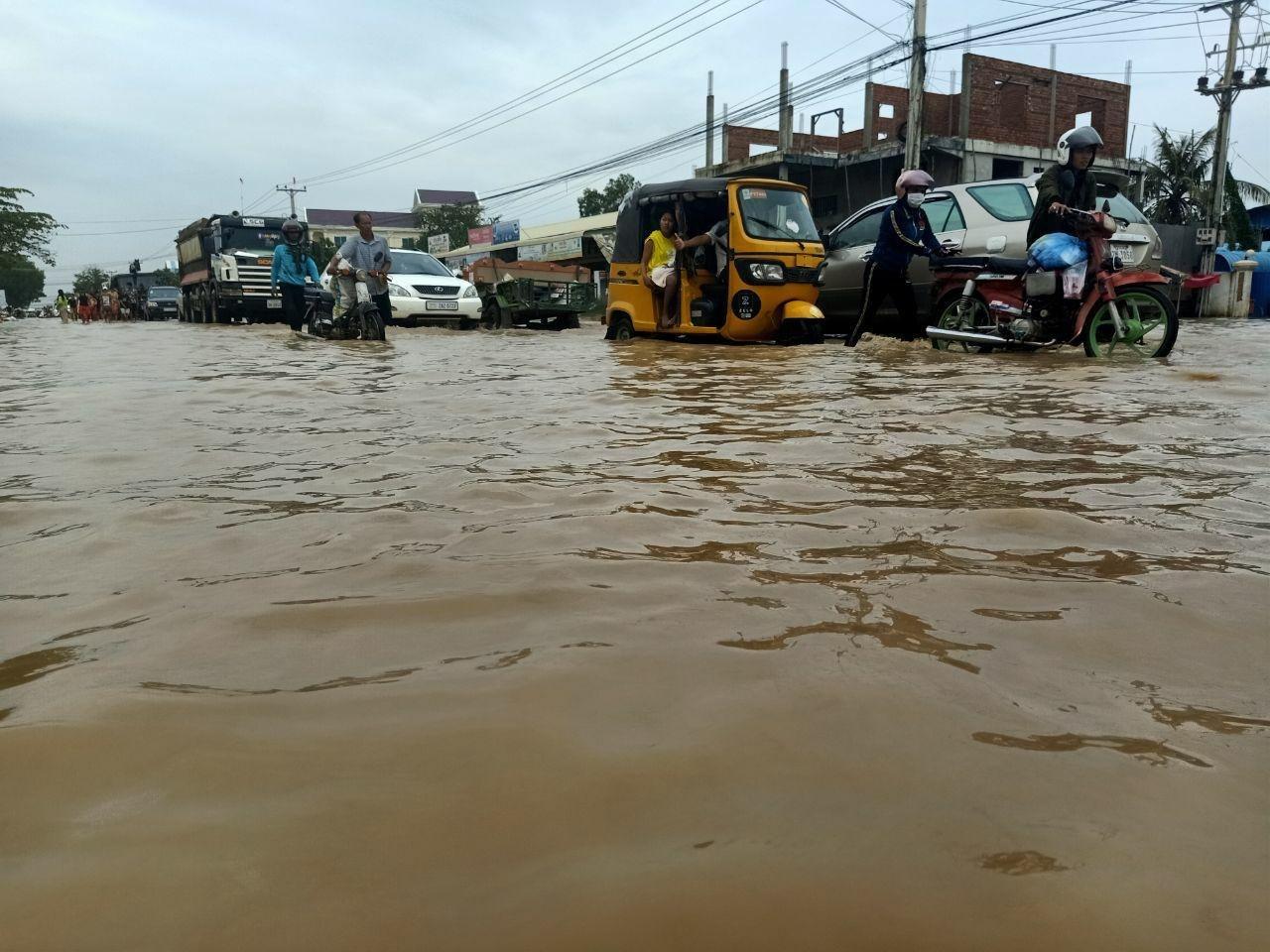
Flooding in Cambodia has killed at least 20 people and displaced thousands more throughout October 2020. (Chea Youkeang)
The extent of the damage is near-impossible to calculate due to the lack of publicly available data, Chanvoitey said. “The wetland reclamation is reflective of market-driven development.
“Although it seems that land reclamation, to a certain degree, is invaluable to the modernization process, it carries serious consequences [and] such development comes at a cost, in which people are likely to be trapped in the flood cycle,” she said.
Calling on the private sector to step up, collaborate with communities and help to bring some much-needed innovation to the city’s infrastructure, Chanvoitey added that climate change, disaster preparedness, population growth, as well as the costs associated with the operation and maintenance of water supply management need to be factored in when calculating the risk of flooding.
Attempts to reach the Ministry of Land Management to discuss the city’s urban planning were unsuccessful with Seng Lot, the ministry’s spokesperson and Leang Monirith, a secretary of state within the ministry both declining to comment on the risks raised by analysts, environmentalists and academics.
As such, it is difficult to know who in the government is aware of the risk associated with consistently filling in wetlands like Cheung Ek and Boeung Tompoun. A key concern is that wetlands do much more than simply flood mitigation and the value of these natural resources is rarely calculated.
The Trillion Dollar Services Provided by Wetlands
One effort attempting to do just that is the Mekong WET project run by the International Union for Conservation of Nature (IUCN). Since 2017, the Mekong WET project is set to finish up at the end of the year, but Senior Programs Officer Raphael Glemet of IUCN’s Asian office pointed out that progress had been slow when it comes to convincing Southeast Asian governments of the importance of wetlands.
“Wetlands provide us with services worth trillions of US dollars every year—entirely free of charge—making a vital contribution to human health and well-being,” said Glemet in an email. “They host important biodiversity, supporting local livelihoods, even in urban areas, by providing food including fish and other aquatic products for direct consumption or trade.”
Glemet went on to note that urban wetlands in the Mekong region act as natural water infrastructure, soaking up the impact of floods by retaining water during the wet season and slowly releasing it to the surface and underground water systems during the dry season. This, he said, sustains river flows, while vegetation and bacteria that grow in the wetlands are key to naturally treating wastewater. These services, he stressed, are provided free of charge.
Wetlands, he said, cover some 30 percent of Cambodia’s total land mass and he noted that the government has taken important steps to better manage and protect these vital resources, having ratified the Ramsar Convention—an international treaty for the conservation and sustainable use of wetlands—in 1999. None of the sites currently listed as protected under the Ramsar Convention in Cambodia are in urban areas.
“This said, these commitments don’t yet seem to translate into changes in practice and behavior and the reality is that wetlands that are neither legally protected nor Ramsar sites are often overlooked in both urban and agricultural planning and encroached upon for what is seen as a more productive use of the land,” Glemet noted, citing the lack of understanding of the real economic value of Cambodia’s wetlands.
He implored property developers and government ministries—even those that are not directly responsible for the management of water resources—to heed these warnings.
“The real value of wetlands is often only understood once they are degraded or lost,” he said.
“The large urban wetlands Cheung Ek and Boeung Tompoun Lake, south of Phnom Penh is only one example of what appears to be a regional trend with wetlands being drained or filled-in for development,” he said, noting that the That Luang Marsh in Vientiane, Lao PDR—a large urban wetland encroached on for industrial and residential development—resulted in urban floods in the Laotian capital.
“Similarly, the Thai government’s response to the 2011 Bangkok flood focused mainly on investment in grey infrastructure—dikes, floodgates—instead of capitalizing on, protecting and expanding the network of wetlands in and around the city,” Glemet noted.
As such, Glemet warned against replacing natural infrastructure with costly man-made systems, especially if they are unable to cope with the volumes currently handled by wetlands. As it stands, the wetlands take in roughly 370,000 cubic meters of wastewater and rainfall every day, according to findings from STT, Equitable Cambodia, LICADHO and Cambodia Youth Network.
Against the Advice of Experts
In 2018, the Parisian urban planning agency Atelier Parisien d'Urbanisme (APUR), in conjunction with Phnom Penh Governor Khoung Sreng, published a report that detailed how much of the Cheung Ek wetlands must be protected in order to retain their wastewater treatment functionality.
The report, signed by Sreng, concluded that 480 hectares of the wetlands was the bare minimum needed for semi-effective wastewater treatment. During the dry seasons, the wetlands take up some 1,500 hectares, but as of this year 95 percent of that has been leased to private developers including ING Holdings, Orkide Villa, Chip Mong Real Estate, Urban Hub, International School Phnom Penh and Mercedes Benz’ local dealer Star Auto Cambodia, among others.
It is worth noting that as of July 2020, more than 1,000 hectares of the Cheung Ek and Boeung Tompoun wetlands remained untouched, but this is changing every day due to the volume of leases granted in the area. A meagre 105 hectares remains unleased, which falls far short of the minimum required according to both APUR and the Phnom Penh Municipality.
Again, Governor Sreng and City Hall spokesperson Met Measpheakdey declined to comment on why projects had been given the go-ahead, despite reports the governor had signed highlighting the danger of doing so.
Celebrated Cambodian scholars have also warned against development along the wetlands, but recognized the need for sustainable wastewater and sewage infrastructure. Sovann Chansopheaktra, while declining to comment on the current state of the wetlands, pointed to research papers that he had co-authored with Kok Sothea, Kim Irvine and Kelly Duval.
“Traditionally, wetlands adjacent to the city have been used as natural wastewater treatment systems for the city, but these wetlands also are under the development process,” a 2012 paper entitled Phnom Penh Sewer Modelling and Contaminant Load Estimates reads. “Development puts more pressure on the drainage and wastewater treatment systems, in particular, during the wet season. In order to plan for effective urban development, including sustainable wastewater treatment, it is necessary to characterize sewer flow and contaminant loads.”
Another of Chansopheaktra’s papers from 2015 estimated that impact to Cheung Ek wetlands’ ability to treat wastewater would begin once 22 percent of the wetlands were filled in.
“Urban expansion is placing increasing pressure on these wetlands and PCSWMM [PC personal computer version of the Stormwater Management Model] results showed that infilling of the largest wetland by up to 22 percent could have a negative impact on treatment, but the system still would function,” wrote Chansopheaktra.
Limited Resources to Adopt Man-made Solutions
Already, more than 30 percent has been filled with sand and soil, with the vast majority of the wetlands slated for development. In the meantime, the Japanese International Cooperation Agency (JICA) is in the process of constructing a wastewater treatment plant in Cheung Ek.
However, with civil society groups estimating a volume of 370,000 cubic meters of wastewater passing through the wetlands each day, JICA’s plant will treat 282,000 cubic meters daily by 2035.
“The planned wastewater treatment plant does not intend to replace the whole function of the wetlands, but to allay water pollution load to Cheung Ek Lake through the operation of new sewage treatment facilities, thereby contributing to protecting and improving water environment of the Cheung Ek Lake,” said JICA’s Cambodian office in an email.
JICA confirmed that they had opted for a treatment method that required the smallest possible site so as to better preserve the wetlands. However, the government’s leasing of some 95 percent of the wetlands raises questions about the efficacy of JICA’s wastewater treatment plant.
“Cambodia is in developing stage,” JICA’s Cambodian office explained. “Therefore, there are so many demands [of infrastructure], which need to be developed or rehabilitated, [not] only in the water supply or wastewater, but also the other sectors such as roads and bridges, energy, ports, telecommunication, etc. with limited government budget.”
“Also, it is necessary to properly address the environmental issues due to the rapid economic development and the urbanization,” they added, noting that their plant was built in line with JICA’s environmental standards, but that other environmental impact assessments regarding the ING City project were handled by the Ministry of Environment.
Neth Pheaktra, spokesperson for the Ministry of Environment, declined to comment, despite being contacted multiple times.
Lack of Planning Endangers the Future
For Saber Masoomi, Cambodia’s country director of Wildfowl and Wetlands Trust, the development projects taking place—and the environmental impact they will have—highlights the urgency of stronger planning.
“I don’t see the wetlands and the man-made wastewater treatment facilities as competing against each other,” said Masoomi, stressing that he was talking in a personal capacity. “Realistically, we’d need to analyze the quality of wastewater of Phnom Penh from different sectors—industrial wastewater is going to be different from household wastewater and so on.
“Having a wetlands near the city and relying on it for wastewater is a good indicator for how socially sustainable the city is, because it happens on the basis of trust—there is no-one managing anything, wastewater is flowing through an ecosystem,” he explained, referring to the Cheung Ek wetlands as a “billion-dollar gift that keeps on giving.”
Their functionality in terms of wastewater treatment and flood protection serves as a barometer of trust between the government and the governed, he said, but warning that said trust would be lost if the wetlands ceased to provide the city with its services. Any development that affected the wetlands, he said, should be carefully considered.
“No-one knows how much would be needed to build infrastructure to replace the wetlands because no-one has generated enough data, but I would request the government to do that—create the data,” Masoomi urged.
“If we know the plan of the government for Phnom Penh, even just in terms of planned population, then we can know what kind of resources it will need,” he added. “Until that’s clear—and maybe there is no clear idea as of yet—but if there is a plan then we can use that publicly to determine the urban metabolism and the level of water security, wastewater treatment facilities needed for the city.”

A man rows back to his home in the Cheung Ek wetlands in the south of Phnom Penh. (Gerald Flynn)






